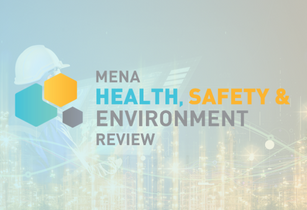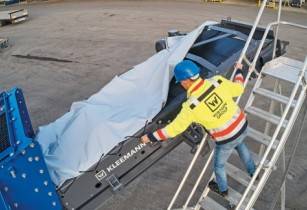Transportation agencies around the world face numerous challenges in how to best plan, design, construct, and operate safe, resilient, and sustainable infrastructure, says Meg Davis, industry marketing director for roads and bridges, Bentley Systems
Aging infrastructure, growing populations and increased traffic and congestion all put pressure on owners and contractors of roads, bridges, and associated structures to identify and utilise cost-effective and efficient ways to do their jobs. They must minimise the impact of transportation projects on the environment and reduce their carbon footprint. In addition, with an aging workforce and high employee turnover, the need to adopt digital tools to streamline processes and enable collaboration across the supply chain is ever-present.
Investment in infrastructure is long overdue
Recent years have seen an increasing number of incidents related to aging infrastructure. Infrastructure failures—such as the bridge in Genoa Italy, the Interstate 35 Mississippi River bridge collapse, and the Interstate 5 Skagit River bridge failure in the state of Washington—demonstrate the importance not only of good quality design and construction, but also of proper operations and maintenance of infrastructure assets.
In many countries, a large number of infrastructure assets have been in place for over 40 years. In the United States, almost 8% of bridges are considered structurally deficient, and wear and tear on roads has left 43% of our public roadways in poor or mediocre condition. A recent study in the UK found that more than 2,000 bridges were not suitable to carry the heaviest vehicles permitted on the public highway. But it is not just the wear and tear that affects the stability of older infrastructure assets for modern demands. Changing needs have placed new stresses on infrastructure that may not have been considered when they were first designed and built.
Climate change and sustainability
Climate change presents a significant and growing risk to our transportation infrastructure, the communities it serves, and the people who rely on it. Rising temperatures, fires, droughts, flooding, and severe weather that are worsened by climate change put stress on transportation infrastructure. In recent years, we have seen numerous examples of climate change.
Infrastructure investment and workforce challenges
Obtaining funding is just the first step in the construction, rehabilitation, and maintenance of our road and bridge infrastructure. Once that funding becomes available, infrastructure owners and their partners may face staffing challenges as they plan and design infrastructure projects. In addition to a competitive job market for engineers, the retirement of experienced personnel, sometimes called the 'silver tsunami', could leave owners and their supply chain without experienced engineers and the knowledge base needed to expeditiously produce project designs and get them out to bid. It will be important to proactively shape the future transportation workforce, providing resources to fill skills gaps, recruiting future workers, and providing the tools and technology to get the work done.
Safer and more efficient transport systems
Transportation planning and roadway design have traditionally focused on the needs of drivers rather than those of all users of the street.
A Complete Streets policy ensures that transportation planners and engineers consistently plan, design, operate, and maintain the entire roadway and roadway networks with all users in mind, including bicyclists, public transportation vehicles and riders, and pedestrians of all ages and abilities to maximise transportation choices. The benefits of implementing a complete streets philosophy are tangible.
The benefits of digital delivery and Digital Twins
Innovative technologies and processes such as digital delivery can help owners and their partners do their jobs better and faster.
Digital delivery involves using digital models, data, and supporting field tools for roadway design, structures design, and construction. It makes it easier to review the design intent and develop high‐resolution 3D visuals, providing improved design quality. It can make a significant impact on reducing project cost overruns, and the 3D design enables designers to test what-if scenarios to refine constructability and optimise project cost.
Advanced technologies: AI/ML and remote monitoring and sensors
Infrastructure owners are often tasked with monitoring vast and challenging geographical areas with limited human and budgetary resources. With historic levels of bridges in disrepair, new funding, and limited human resources, these owners and their supply chains need to embrace new technology to close the execution gaps.
Digital tools, techniques, strategies, and methodologies can streamline processes and enable collaboration across the supply chain. One such example is the technological leap through the proven use of digital twin technologies. Reality data capture using drones and photogrammetry in the field has enabled users of all industries and sizes to easily generate as-operated digital twins of their existing inventory for visualisation and coordination with their stakeholders.
Automated, cost-effective, and secure, IoT-based condition monitoring solutions are an efficient way of gaining the kind of data that allows asset owners to manage risk responsibly and ensure public safety.
Using dynamic-sensing IoT devices allows organisations to cost-effectively measure the performance of assets, such as bridges, in real time. Powerful cloud-based algorithms transform the sensor data into detailed structural performance metrics under various traffic loads and environmental conditions—providing valuable insights into the health of the structures.



























